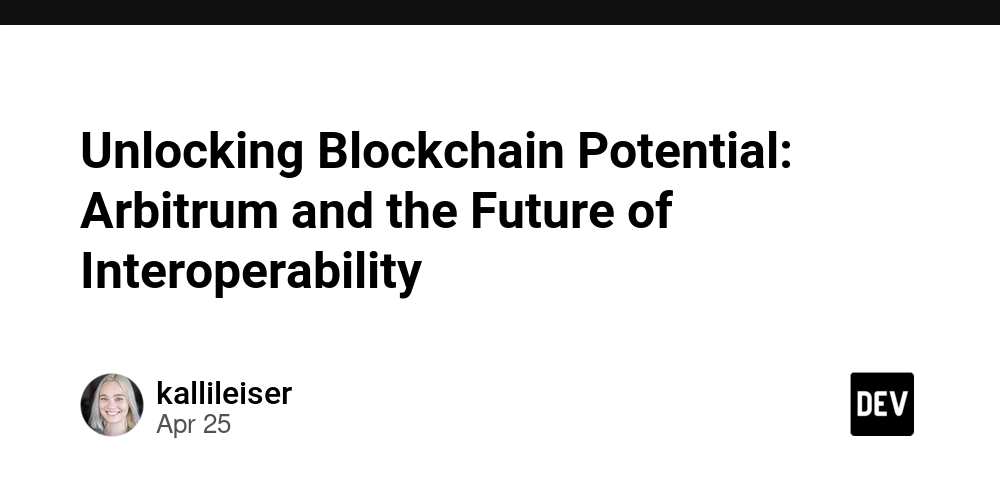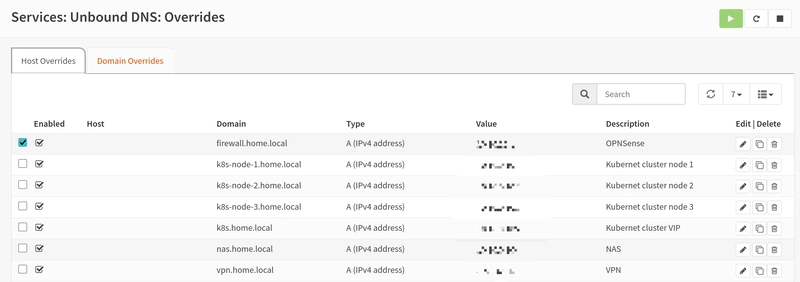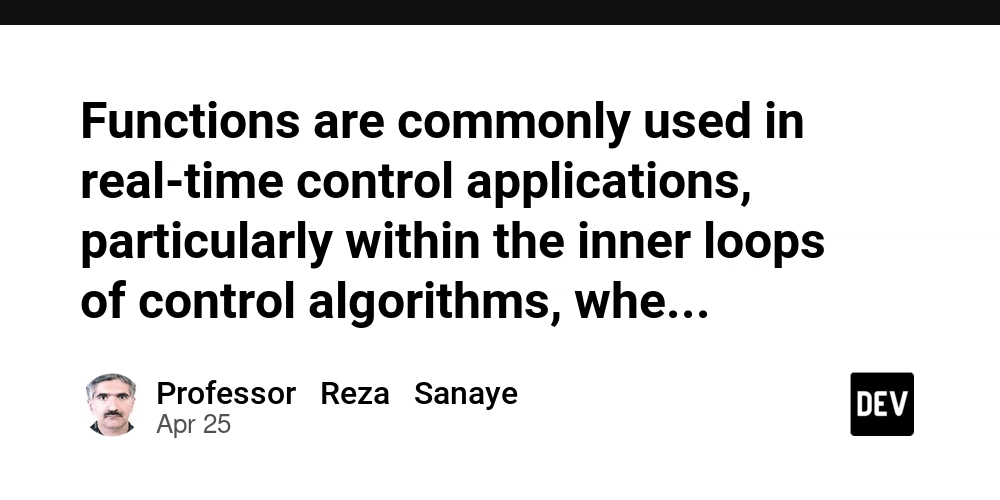Unlocking Blockchain Potential: Arbitrum and the Future of Interoperability
Abstract: This post takes an in-depth look at the evolution of blockchain interoperability with a focus on Arbitrum, a leading Layer 2 solution that enhances Ethereum’s scalability and serves as a bridge between multiple blockchains. We explore the background of blockchain interoperability, its technical challenges, and the innovative mechanisms provided by Arbitrum. In addition, we discuss practical applications, benefits, and future trends in the decentralized ecosystem. This article is optimized for both human readers and search engines, using clear headings, bullet lists, and tables to provide an accessible yet technical perspective on the evolving blockchain landscape. Introduction Blockchain technology has transformed digital transactions and data management. However, its true potential lies in interoperability—that is, the ability to connect multiple blockchains seamlessly. As isolated networks may limit innovation, solutions like Arbitrum come to the forefront by providing a robust Layer 2 scaling solution for Ethereum and bridging ecosystems. In this post, we dive into the intricacies of blockchain interoperability, examine how Arbitrum addresses these challenges, and explore future innovations. The topic is of particular interest to developers, investors, and tech enthusiasts striving to understand how decentralized systems will evolve to support global digital economies. Background and Context Blockchain interoperability refers to the capacity of different blockchain networks to share data, communicate, and value exchange efficiently. Without interoperability, blockchains risk becoming isolated silos that restrict collaborative innovation across ecosystems. This need is similar to how the Internet relies on standardized protocols like TCP/IP to enable data exchange and connectivity. Historical Perspective Early blockchain networks were built as independent systems, primarily focusing on transactions with limited interaction with other chains. With the advent of smart contracts, inter-blockchain communication became critical to support increasingly complex decentralized applications (dApps). Solutions like Layer 2 scaling, including the groundbreaking work by Offchain Labs, emerged to enhance scalability while ensuring security and cost efficiency. Key Definitions Blockchain Interoperability: The ability of different blockchain networks to communicate, share value, and exchange data seamlessly. Layer 2 Solutions: Protocols built on top of base blockchains (e.g., Ethereum) that increase transaction speed and reduce costs while inheriting the security of the underlying chain. Cross-Chain Bridges: Mechanisms that facilitate asset transfers and data sharing securely between distinct blockchain networks. For an in-depth look, refer to this comprehensive overview on blockchain interoperability. Core Concepts and Features Arbitrum’s unique technical architecture and scalability solutions illustrate how interoperability can be achieved. Here are some core concepts behind its success: Arbitrum’s Layer 2 Solution Arbitrum serves as a Layer 2 protocol that operates as an extension of Ethereum. Its key features include: Efficiency and Cost Reduction: Transactions on Arbitrum are significantly less expensive than on Ethereum’s main chain. Developers benefit from lower gas fees and faster confirmation times, making it an attractive platform for decentralized applications. Security and Trust: Arbitrum leverages Ethereum’s robust security while implementing its own mechanisms to validate and settle Layer 2 transactions. This dual-layer protection ensures that dApps retain their trustworthiness even under heavy network loads. Flexible Development Environment: By supporting EVM (Ethereum Virtual Machine) compatibility, Arbitrum allows developers to easily migrate projects without the need to rewrite complex codebases. The seamless integration also promotes the creation of new applications that can operate across different blockchain environments. Learn more about Arbitrum’s technical innovations via the Arbitrum scaling solution page. Interoperability with Other Blockchains One of the most innovative aspects of Arbitrum is its ability to enable cross-chain interactions. Its design accommodates secure data and asset transfers between Ethereum and other blockchains, which is essential for building a unified decentralized ecosystem. Cross-Chain Bridges: These specialized bridges ensure that tokens and data can move securely from one chain to another. For more details, see Arbitrum cross-chain transactions. Standardization Efforts: In addition to technical prowess, Arbitrum engages in collaborative initiatives to develop standardized protocols for blockchain communication. This provides a framework for multiple blockchains to interact without friction, ultimately fostering a more connected digital economy.

Abstract:
This post takes an in-depth look at the evolution of blockchain interoperability with a focus on Arbitrum, a leading Layer 2 solution that enhances Ethereum’s scalability and serves as a bridge between multiple blockchains. We explore the background of blockchain interoperability, its technical challenges, and the innovative mechanisms provided by Arbitrum. In addition, we discuss practical applications, benefits, and future trends in the decentralized ecosystem. This article is optimized for both human readers and search engines, using clear headings, bullet lists, and tables to provide an accessible yet technical perspective on the evolving blockchain landscape.
Introduction
Blockchain technology has transformed digital transactions and data management. However, its true potential lies in interoperability—that is, the ability to connect multiple blockchains seamlessly. As isolated networks may limit innovation, solutions like Arbitrum come to the forefront by providing a robust Layer 2 scaling solution for Ethereum and bridging ecosystems. In this post, we dive into the intricacies of blockchain interoperability, examine how Arbitrum addresses these challenges, and explore future innovations. The topic is of particular interest to developers, investors, and tech enthusiasts striving to understand how decentralized systems will evolve to support global digital economies.
Background and Context
Blockchain interoperability refers to the capacity of different blockchain networks to share data, communicate, and value exchange efficiently. Without interoperability, blockchains risk becoming isolated silos that restrict collaborative innovation across ecosystems. This need is similar to how the Internet relies on standardized protocols like TCP/IP to enable data exchange and connectivity.
Historical Perspective
- Early blockchain networks were built as independent systems, primarily focusing on transactions with limited interaction with other chains.
- With the advent of smart contracts, inter-blockchain communication became critical to support increasingly complex decentralized applications (dApps).
- Solutions like Layer 2 scaling, including the groundbreaking work by Offchain Labs, emerged to enhance scalability while ensuring security and cost efficiency.
Key Definitions
- Blockchain Interoperability: The ability of different blockchain networks to communicate, share value, and exchange data seamlessly.
- Layer 2 Solutions: Protocols built on top of base blockchains (e.g., Ethereum) that increase transaction speed and reduce costs while inheriting the security of the underlying chain.
- Cross-Chain Bridges: Mechanisms that facilitate asset transfers and data sharing securely between distinct blockchain networks.
For an in-depth look, refer to this comprehensive overview on blockchain interoperability.
Core Concepts and Features
Arbitrum’s unique technical architecture and scalability solutions illustrate how interoperability can be achieved. Here are some core concepts behind its success:
Arbitrum’s Layer 2 Solution
Arbitrum serves as a Layer 2 protocol that operates as an extension of Ethereum. Its key features include:
Efficiency and Cost Reduction:
Transactions on Arbitrum are significantly less expensive than on Ethereum’s main chain. Developers benefit from lower gas fees and faster confirmation times, making it an attractive platform for decentralized applications.Security and Trust:
Arbitrum leverages Ethereum’s robust security while implementing its own mechanisms to validate and settle Layer 2 transactions. This dual-layer protection ensures that dApps retain their trustworthiness even under heavy network loads.Flexible Development Environment:
By supporting EVM (Ethereum Virtual Machine) compatibility, Arbitrum allows developers to easily migrate projects without the need to rewrite complex codebases. The seamless integration also promotes the creation of new applications that can operate across different blockchain environments.
Learn more about Arbitrum’s technical innovations via the Arbitrum scaling solution page.
Interoperability with Other Blockchains
One of the most innovative aspects of Arbitrum is its ability to enable cross-chain interactions. Its design accommodates secure data and asset transfers between Ethereum and other blockchains, which is essential for building a unified decentralized ecosystem.
Cross-Chain Bridges:
These specialized bridges ensure that tokens and data can move securely from one chain to another. For more details, see Arbitrum cross-chain transactions.Standardization Efforts:
In addition to technical prowess, Arbitrum engages in collaborative initiatives to develop standardized protocols for blockchain communication. This provides a framework for multiple blockchains to interact without friction, ultimately fostering a more connected digital economy.
Comparative Table: Interoperability Features
Below is a table comparing key interoperability features between Ethereum (Base Layer) and Arbitrum (Layer 2):
| Feature | Ethereum (Base Layer) | Arbitrum (Layer 2) |
|---|---|---|
| Transaction Speed | Moderate (subject to congestion) | High (optimized through batching & rollups) |
| Transaction Cost | High gas fees in peak times | Lower fees due to efficiency improvements |
| Security Model | Robust but slower confirmation | Inherits Ethereum's security, faster finality |
| EVM Compatibility | Native | Fully compatible; seamless migration |
| Cross-Chain Interoperability | Limited native support | Extensive via cross-chain bridges |
Applications and Use Cases
Arbitrum’s enhanced scalability and interoperability open up numerous applications across various sectors. Here are some practical examples:
Decentralized Finance (DeFi):
With lower fees and faster transactions, Arbitrum is a natural home for DeFi applications including lending platforms, yield farming protocols, and decentralized exchanges. It provides improved liquidity and enables more robust cross-chain asset swaps.Gaming and NFTs:
As blockchain gaming and NFT marketplaces continue to expand, the need for fast, secure, and interoperable networks is crucial. Arbitrum is supporting NFT marketplaces by ensuring that artists and collectors can transfer digital assets securely and cost-effectively.Enterprise Solutions:
Businesses implementing blockchain for supply chain management, data integrity, and digital identity can benefit from Arbitrum’s ability to integrate with multiple blockchain systems. This interoperability ensures that critical data flows seamlessly between legacy systems and modern decentralized networks.
Additional insights on blockchain use cases can also be found in this dev.to discussion on Arbitrum and transaction batching.
Key Applications:
- DeFi Platform: Lower transaction fees enable micro-transactions and complex financial derivatives.
- Gaming Ecosystem: Faster transactions support in-game assets and NFT trades.
- Supply Chain Management: Secure data exchange across disparate systems.
Challenges and Limitations
While Arbitrum and similar solutions represent a significant leap forward, interoperability and Layer 2 scaling come with their own set of challenges:
Technical Complexity:
Balancing scalability and security is a delicate task. Integrating Layer 2 solutions with underlying blockchain protocols means that technical challenges, such as ensuring data integrity and preventing fraudulent transactions, must be addressed continuously.Adoption Barriers:
Transitioning from legacy mechanisms and educating developers on new standards and protocols can slow down interoperability efforts. Organizations may be hesitant to adopt new frameworks until proven at scale.Regulatory Hurdles:
As inter-chain transactions become more prevalent, ensuring compliance with global financial regulations remains a challenge. Standards must evolve to address data privacy and transaction security across jurisdictions.Cross-Chain Security Risks:
When utilizing bridges for inter-chain communication, there is always a risk of vulnerabilities. Ensuring that cross-chain bridges maintain robust security measures is imperative.
For a detailed perspective on blockchain security challenges, refer to this guide on blockchain security.
Future Outlook and Innovations
Interoperability is the cornerstone of the future decentralized ecosystem. Innovations on the horizon are set to further transform the way blockchains interact:
Trends to Watch
Advanced Cross-Chain Protocols:
Emerging protocols will likely offer even deeper integration between different networks. This means faster asset transfers, improved data consistency, and more robust security framings.Enhanced Regulatory Frameworks:
As technology advances, lawmakers will gradually introduce global standards that truly support decentralized ecosystems while protecting user rights. Collaborative efforts between tech innovators and policymakers will shape the future regulatory landscape.Broadening Adoption in Enterprises:
With improvements in interoperability, traditional businesses will be more inclined to adopt blockchain technology. The ability to seamlessly integrate with legacy systems and other blockchain networks will pave the way for enterprise adoption.Innovation in Decentralized Governance:
Projects like Arbitrum will encourage the development of new governance models that allow communities to participate in deciding network upgrades and cross-chain protocols. This democratized approach may also help fine-tune the balance between security and rapid innovation.
Emerging Use Cases
The future is bright for the integration of blockchain in real-world scenarios. Some predicted innovations include:
Tokenized Asset Exchanges:
Where assets across different blockchains can be seamlessly exchanged through standardized protocols.Interconnected IoT Systems:
Utilizing blockchain interoperability to provide secure data sharing and device management across diverse platforms.Decentralized Autonomous Organizations (DAOs):
Leveraging standardized protocols to facilitate cross-chain governance, thereby enhancing transparency and operational efficiency.
For a comprehensive analysis on decentralized funding and broader project initiatives, check out this dev.to article on open source funding and blockchain projects.
Structured Bullet List: Benefits of Blockchain Interoperability
-
Enhanced Functionality:
- Merges diverse blockchain features into richer, more robust applications.
-
Broader User Reach:
- Bridges various ecosystems and increases adoption rates.
-
Innovation Boost:
- Fosters collaborative development leading to cutting-edge use cases.
-
Resilience and Redundancy:
- Provides alternative routes for transactions, increasing system reliability.
-
Regulatory Adaptability:
- Supports frameworks that can be tuned to meet evolving legal standards.
Additional Resources and Authoritative Links
For further reading and reference, here are some key links that provide additional insights into blockchain interoperability and scaling:
- Arbitrum Official Site
- Offchain Labs Homepage
- Blockchain Interoperability Overview
- Arbitrum Cross-Chain Bridges
- Blockchain and Open-Source Licensing
Additional perspectives from the developer community can be found in this dev.to post about balancing privacy and scalability using Arbitrum.
Summary
To summarize, interoperability is a critical component for the evolution of blockchain technology. Arbitrum stands out as a leading solution, offering a Layer 2 protocol that not only boosts Ethereum’s performance but also serves as a bridge between disparate blockchains. It accomplishes this by reducing transaction costs, maintaining high-security standards, and providing a flexible development environment—all of which are critical to the growth of decentralized applications.
While challenges such as technical complexity, adoption barriers, and regulatory uncertainties remain, the future outlook for blockchain interoperability is optimistic. Innovative solutions like cross-chain bridges, advanced governance models, and broadening enterprise adoption are paving the way for a more interconnected and resilient digital ecosystem.
Looking ahead, scaling solutions and interoperability protocols will continue to evolve. They will form the backbone of a decentralized future, facilitating secure and rapid data exchange across global networks. As blockchain technology matures, the collaborative efforts between developers, businesses, and regulators will ensure that interoperability transforms from an aspiration into a tangible, widely adopted reality.
In closing, Arbitrum is not only solving present challenges but is also laying the groundwork for the future of blockchain applications. Whether you are a seasoned developer, an investor, or simply intrigued by emerging technologies, understanding interoperability and the innovations driving it will be essential as we navigate the next generation of digital transformation.
Embracing interoperability means embracing the future of decentralized connectivity. Stay tuned for further advancements as the blockchain ecosystem continues to innovate and expand.
Happy developing and exploring the vast world of blockchain!


















_Olekcii_Mach_Alamy.jpg?width=1280&auto=webp&quality=80&disable=upscale#)

















































